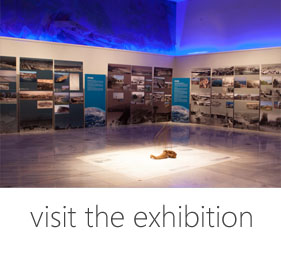Name
ToroniCurrent Name
ToroniAncient Name
ToroniMedieval Name
ToroniHistory of the name
Place :
Country
GreeceGeopolitical Unit
MacedoniaAdministrative subdivision
Prefecture of Chalkidiki, Municipality of SithoniaLocation
Toroni is located in the South-West end of the peninsula of Sithonia in Chalkidiki.Foudation Date
The city was founded by Chalkidian colonists in the 8th century BC.Current condition
Today, in the place where ancient Toroni was situated, there is a settlement with the same name which has a touristic and fishing character.History
The area has been residential since antiquity. Ancient Toroni has been one of the most important settlements of the Chalkidians of Euboea in Chalkidiki. In 480 BC it was forced to contribute to Xerxis’ campaign against Southern Greece. After Medika it was included in the firtst Athenian alliance. It rebelled in 424 BC and affiliated with Vrasidas, the Spartan General, but throughout the Peloponnese war it was the main reason of argument between the Athenians and the Lakedemonians.
In 348 BC, Filippos B’ of Macedonia took it over. In 168 BC, after the battle of Pydna and the demise of the Macedonian kingdom, the Romans took over it. The ancient city was one of the biggest and richest cities in Chalkidiki.
Sources don’t mention anything about the area until the 14th century. From that time and on, it is being referred to in documents from the Holy Mountain as a monastery property. However, ancient remnants ensure that there were residents in the ancient city during the early Christian times, as well.
During the byzantine times the residents fortify the small peninsula of Lekythos. Foundings imply that, at least during the times of the Palaiologi, its position and its harbor were once more important for Chalkidiki. The settlement was destroyed and abandoned completely in the 16th century.
Description
Excavations have brought to light three early-Christian basilicas, part of a cemetery and remnants of other buildings dated to the early-Christian era as well. Basilica A’ (known as Basilica of AgiosAthanasios) is located outside the walls of the ancient city and is dated in the middle or the second half of the 6th century AD. The remnants of the other two basilicas are inside the urban site of the ancient city and their destruction is dated to the 6th century AD.
In the byzantine times, single-naved churches were built in the center of all three basilicas, while in the whole extent of the castle in Lekythos, pottery of the early-Christian era was gathered. Finally, a twin cistern was found over which a single-naved church was built.
Harbor
The harbor of Toroni is located on the eastern part of Lekythos, on the small cape of 13 meters height above sea level, in the northern part of the ancient city. In this area, where a small bay is formed, underwater antiquities have been found which are probably connected to buildings of the harbor.
Fortification
The byzantine fortification of the small peninsula of Lekythos, consists of a simple enclosure, built in at least two different structural phases and in a big part it was made of reused material from the ancient city. It generally follows the shape of the peninsula and its maximum measurements are 128 X 38 meters. The interior of the castle is divided by a traverse wall. Its northern part was the last resort for the residents in case of invasion, while the southern part was the byzantine settlement. The two parts inter-communicated through a gate in the middle of the traverse wall. The main gate of the castle was on its eastern side, while later, it went under alterations during which it became narrower and was closed with a protective tower.
Medieval Sites
Nowadays, parts of the fortification of the settlement of the peninsula of Lekythos are visible, as well as parts of the fortification of ancient Toroni.
Textual Sources
• ΘουκυδίδηςΙV 110-116, V 2-3.
Bibliography
• ΑΔ
• ΚαραγιάννηΦ., ΟιβυζαντινοίοικισμοίστηΜακεδονίαμέσααπότααρχαιολογικάδεδομένα (4ος-15οςαιώνας),Θεσσαλονίκη 2010, σ.225 – 226.
• Leake W.M., Travels in Northern Greece, v. III, σ. 119, 155, 454 – 455.
• MerittB.D., Τορώνη, Χρονικά της Χαλκιδικής τ. 19 – 20(1970), σ. 35 – 43.
• ΝικονάνοςΝ.,Η Παλαιοχριστιανική Βασιλική του Αγίου Αθανασίου στην Τορώνη Χαλκιδικής, Αρμός. ΤιμητικόςτόμοςστονκαθηγητήΝ. Κ. Μουτσόπουλο, τ. Β’, Θεσσαλονίκη 1991, σ. 1267 – 1279.
• ΝικονάνοςΝ., Έρευνες στα Βυζαντινά και Μεταβυζαντινά Μνημεία της Χαλκιδικής, Πρακτικά του 1ου Πανελληνίου Συμποσίου Ιστορίας και Αρχαιολογίας της Χαλκιδικής, Θεσσαλονίκη 1987, σ. 127 – 143.
• ΝικονάνοςΝ., Χριστιανική Τορώνη, Πρώτο Συμπόσιο Βυζαντινής και Μεταβυζαντινής Αρχαιολογίας και Τέχνης, Πρόγραμμα και περιλήψεις ανακοινώσεων, Αθήνα 1981, σ. 63 – 64.
Links
http://odysseus.culture.gr/h/3/gh351.jsp?obj_id=2610




























